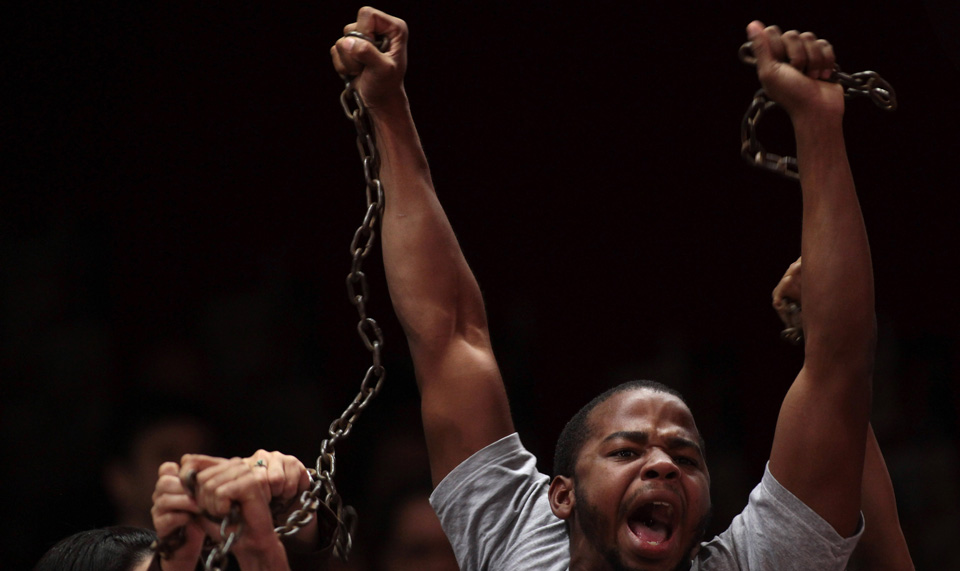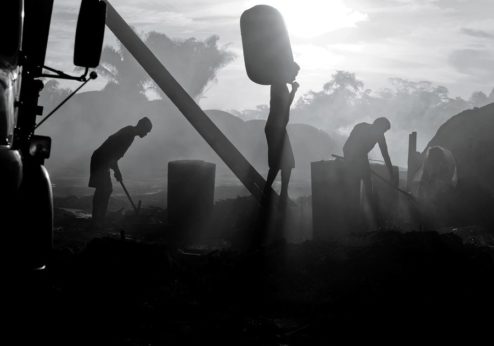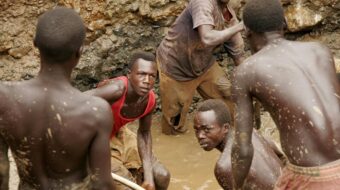
Slavery was officially abolished in Brazil only in 1888, later than in the United States and much later than in all the other independent Latin American countries. De facto slavery has persisted, however, though the progressive governments of Luiz Inácio Lula da Silva and Dilma Rousseff took measures to get rid of it. Now, under right-wing President Michel Temer, there is fear that the progress made up to now will be reversed.
Brazil was a major center for chattel slavery under Portuguese colonial rule. First, it was indigenous Brazilians who were forced to labor for the European conquerors. Then, according to data from the Trans-Atlantic Slave Trade Database, up to 4.8 million imported African slaves and their descendants became the backbone of agriculture and mining during the colonial period.
The practice continued during the empire of Pedro I and Pedro II even following independence. The opulence of the Brazilian ruling class relied significantly on the wealth extracted from the labor of slaves.
When Emperor Pedro II’s daughter, Princess Isabel, announced the abolition of slavery in 1888, some of these wealthy interests were angered. Their opposition to the move was one among a number of motives that shifted upper class support for efforts to abolish the monarchy the following year.

Slavery after slavery
Subsequent to the official abolition of slavery, agricultural and other wealthy interests simply replaced it with other forms of unfree labor, including debt peonage and forced labor. This was the case in a number of other Latin American countries as well.
Such arrangements were and still are considered slavery by another name by labor, the left, and peasants’ organizations. Many of the practices, though they survive today, are illegal.
The official definition of slavery under Brazilian law includes the following criteria agreed on with the UN Human Rights Council and the International Labor Organization (ILO), only one of which has to be found applicable for a company to be in violation of the anti-slavery law: degrading working conditions, exhausting work routines, debt bondage, or forced labor.
But enforcement has been difficult and weak, and dangerous for workers who, if they complain or try to organize, may end up murdered or without a livelihood.
Under the progressive governments of Lula da Silva and Dilma Rousseff, enforcement efforts were ramped up. Key was Lula’s introduction, in 2003, of “a Lista Suja” – “the Dirty List” – which publicly named the companies who were, in effect, practicing slavery in violation of the law.
The rationale for this list is that if a company’s name appears on it, it becomes harder for the firm to secure financing from private sources worldwide, because the providers of such financing would not want to be associated with activities that could get them into legal trouble or hurt their bottom lines and corporate reputations.
Once placed on the list, a company remains there for two years and can only be removed if it proves, to the government’s satisfaction, that it has cleaned up its act.
Employers sued, and a court ruling, issued just in time for the increased private economic activities in the run up to the Rio Olympics, forced the suspension of the “Dirty List” in 2014, raising fears that in certain industries the bad old days would be back in force.
A recent report, Beneath the Forest: Amazonia in Pará Looted with Slave Labor, published jointly by the Carmen Bascarán Center for the Defense of Life and Human Rights and the Pastoral Commission on Land, shows how the slave system works in the Amazonian forest regions of the Brazilian state of Pará.
During the military dictatorship that lasted from 1964 to 1985, the Brazilian government sought to “solve” the situation of impoverished peasants by resettling thousands on lands in the Amazon jungle, obviating the necessity to carry out land reform that would have involved breaking up the estates of the rich.
The plan was a failure, however, producing death and destruction for indigenous people, devastating the environment in the region, and left non-indigenous farmers unable to make a living in the allotted parcels.
Capital’s new pool of labor
Moving in to pick up the pieces were corrupt companies interested in making fortunes from the exploitation of forest resources, especially the high quality wood that was in demand by the international furniture industry.
Destitute peasants in the Amazon settlements felt they had little choice but to sign on with these companies, even though, as the Beneath the Forest study shows, every one of the Brazilian and UN criteria for the existence of modern slavery exists in these places.
Workers have inadequate food, housing, and water and are not protected from dangerous animals such as snakes, scorpions, jaguars (!) and, perhaps worst of all, disease-carrying mosquitos. The workday is excessive and exhausting. Workers are often trapped in debt to the company, and those who object risk either being fired in the middle of the Amazon jungle or being subjected to deadly violence.
These things have been allowed to go on due to government corruption and because the forest canopy hides many illegal activities from view which would likely be detected in other kinds of terrain.
In addition to the hardships imposed on the former peasants now drawn into the industries of resource capitalism, Beneath the Forest emphasizes that the situation in the Brazilian wood industry is also a disaster for the environment and indigenous peoples. Sometimes the illegal exploitation, with slave labor, of forest resources takes place in nature reserves or on land officially reserved for indigenous tribal people.
“Neoliberal globalization’s most important transformation: the globalization of production processes…and its driving force: the hunger of Northern capitalists for low-wage labor corralled in Southern nations.”
An important aspect of the study is that it links the abusive practices on the ground to global supply chains controlled by major transnational corporations and their affiliates. Rare and valuable woods harvested illegally in the Brazilian Amazon have ended up, after going through several corporate intermediaries, in the Lowes furniture chain in the United States and in the Brazilian branch of Walmart.
The role of monopoly corporations based in wealthy countries and their supply chain providers is the focus of a recent book by John M. Smith, Imperialism in the 21st Century: Globalization, Super-Exploitation, and Capitalism’s Final Crisis (Monthly Review Press, 2016).
The situation of Brazilian forest products and the vast network of procurers, suppliers, and retailers producing them is an example of the phenomenon of “the global commodity” described by Smith. “Neoliberal globalization’s most important transformation,” he argues, has been “the globalization of production processes” driven by “the hunger of Northern capitalists for low-wage labor corralled in Southern nations.”
Reaction strikes back
Last summer, President Dilma Roussouff was pushed out by a constitutional coup fomented, in part, by major Brazilian agribusiness interests. The new president, Michel Temer, and his allies in the national Congress have set out to destroy all the progress on workers’ and human rights achieved by his predecessors.
The wealthiest and most abusive elements of Brazilian society dominate the Temer cabinet. His minister of Agriculture, Blairio Maggi, is himself the wealthiest soybean magnate in the country, and so has a vested interest in agricultural activities that are impeded by the defense of peasants’ rights.
It should come as no surprise that the government has announced it wants to change the definition of what constitutes slave labor. Removed would be the criteria of degrading and exhausting working conditions. This will put an end to some of the most important aspects of enforcement of the slave labor laws, as well as place the country at odds with norms established by the ILO and the UN Commission on Human Rights.
In addition, the cuts to the budget which Temer’s allies in Congress have imposed are already affecting the possibility of enforcing even the weakened anti-slavery laws. The Communist Party of Brazil (Partido Comunista do Brasil) is warning that last year, the number of people rescued from slavery in Brazil was the lowest since the year 2000, and there is a danger of things worsening even further.
This danger looms not only due to the weakening of the definition of slavery, but also because of a radical reduction in the number of inspectors and even of automobiles to enable the inspectors to travel around rural areas to do their work – all results of Temer’s massive austerity program.












Comments